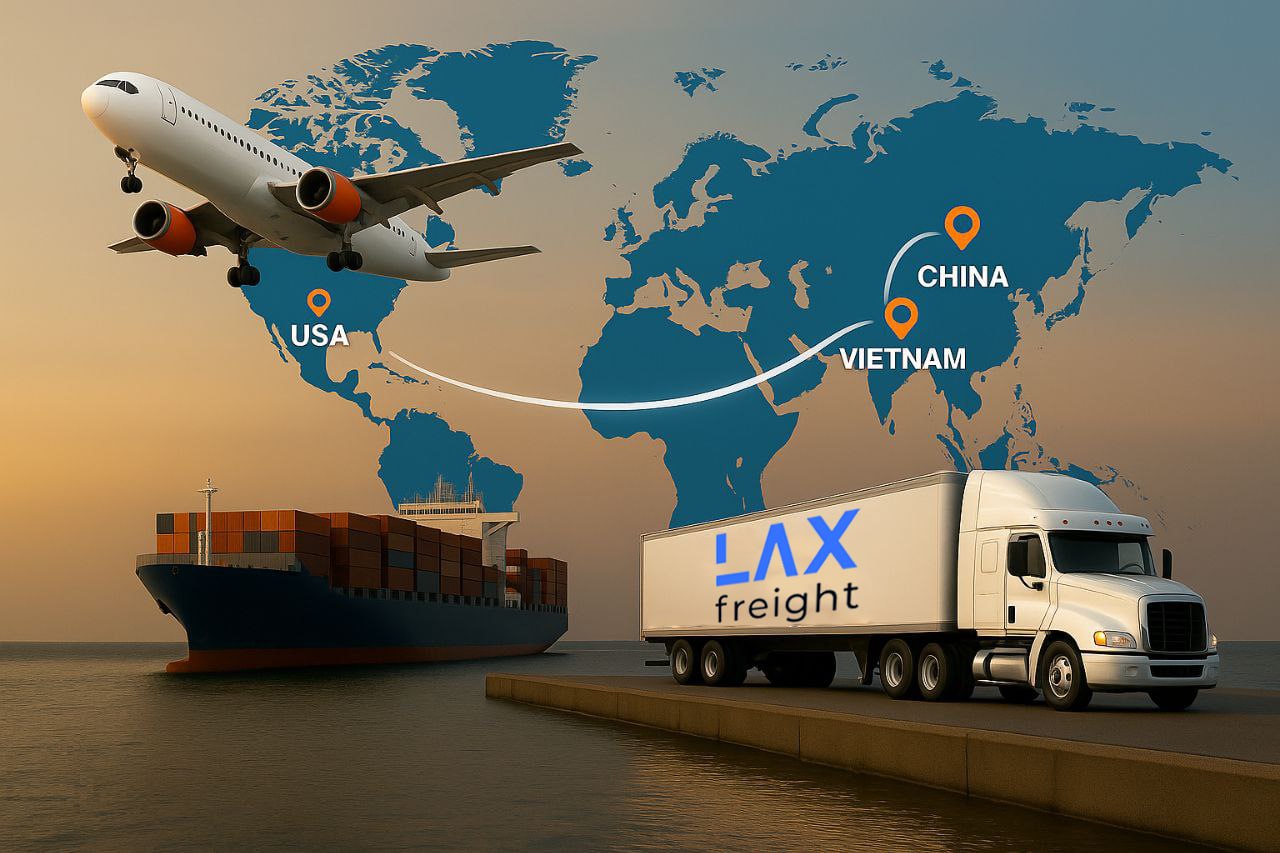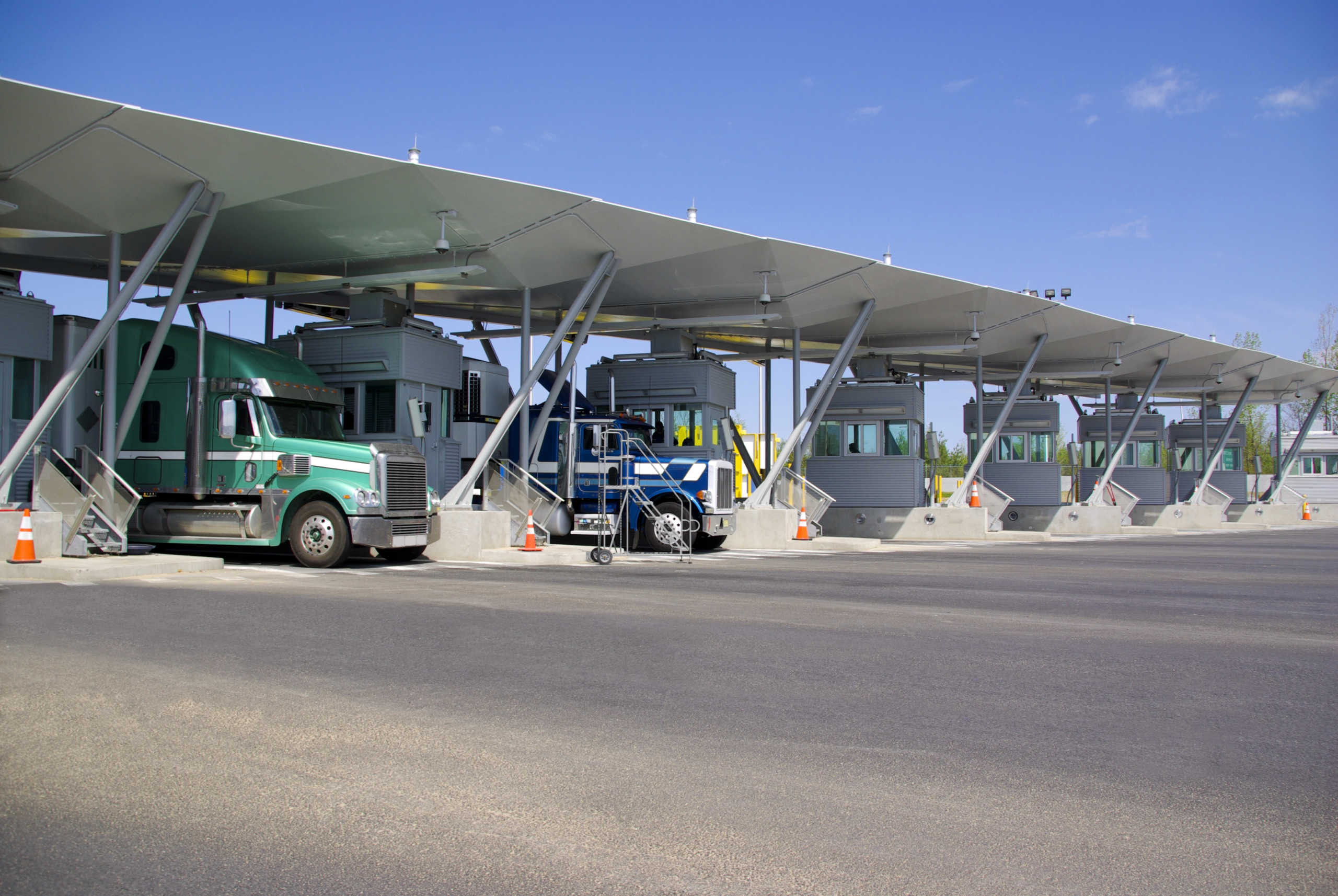Efficient logistics and supply chain management are essential components for success and competitiveness in the current fast-paced business environment. As businesses grow and their logistics needs become more complex, many companies turn to third-party providers. Two popular models for these are third-party logistics (3PL) and fourth-party logistics (4PL). Each system has its own benefits and services. Understanding their differences is key to selecting the right model for your business.
What is 3PL (Third-Party Logistics)?
Third-party logistics refers to cases when companies outsource logistics operations to specialized shipping companies. These specialists manage a broad range of functions within the supply chain, including warehousing, inventory management, order fulfillment, transportation, freight forwarding, packaging, and reverse logistics. Cooperating with a 3PL can be an attractive option for businesses that want to streamline the customer’s supply chain and expand their presence to broader markets.
Core functions of 3PL
The precise role and functions of a 3PL provider vary based on the company’s requirements and needs. This can include the full range of logistics services or focus on specific tasks. For instance, some businesses can partner up with 3PLs for warehousing and storage needs, while others may need all aspects of the supply chain.
Warehousing. 3PL providers usually operate large-scale warehouse space. This offers effective storage solutions and real-time inventory tracking. The main advantage of a third-party logistics provider warehousing is scalability. Thus, companies can increase or decrease storage levels in accordance with the market demand without investing in permanent facilities.
Transportation services. This aspect involves shipping goods from suppliers to warehouses or retailers, as well as customers. 3PLs services involve an established network of carriers, offering better delivery rates and optimized routes. This can help save on costs and reduce transit times.
Order fulfillment. In some cases, 3PLs handle the complete order processing process. After a customer places an order, the 3PL processes it, handling all processes. For instance, their responsibilities include picking the goods, packing, and shipping orders. This seamless integration allows for improved delivery speed and accuracy.
Customs brokerage. For companies that need international shipping, some logistics providers can help with customs clearance, paperwork, and compliance with local regulations. With it, businesses can simplify the process of cross-border logistics.
Use Cases for 3PL
Different types of businesses rely on 3PL providers to streamline their operations and supply processes. For instance, e-commerce companies can use 3PL services to ensure fast, accurate shipping and customer satisfaction and meet their expectations for timely delivery. The other example is retailers with large inventories who use 3PLs to handle storage and replenishment across several locations.
Technological solutions for 3PL
3PL providers increasingly implement technologies to enhance their services. Some may integrate with their clients’ enterprise resource planning (ERP) and order management systems (OMS). This ensures the exchange of information and end-to-end visibility across the supply chain. For example, real-time tracking solutions allow businesses to monitor the exact location of their shipments. This provides reliability and accurate delivery estimates. In addition, third-party logistics companies use data analytics and reporting tools. They track key metrics like transit times, delivery success rates, and inventory turnover. With it, 3PLs can identify patterns, forecast customer demand, and recommend areas for improvement.
What is 4PL (Fourth-Party Logistics)?
Fourth-party logistics, or Lead Logistics Providers (LLPs), is a logistics model that goes beyond the 3PL model. It takes on a strategic, management-focused role in overseeing an entire supply chain. 4PLs act as a single point of contact, integrating and managing multiple 3PL services and other supply chain resources. In short, while 3PL focuses on executing specific logistics services, a 4PL company handles designing, implementing, and optimizing the entire supply chain network.
Core Functions of 4PL
4PLs refer to broader processes and responsibilities than 3PLs. Fourth-party logistics provider coordinates and manages all logistics processes across several service providers. This brings added layers of strategic planning, data analysis, and process optimization.
Supply chain management. The main role of a fourth-party logistics provider is to oversee the complete supply chain, from procurement to last-mile delivery. This includes coordinating several 3PL providers, warehouses, and carriers and creating an integrated and seamless logistics network.
End-to-end visibility. 4PL providers track all processes of the supply chain, from sourcing and inventory to shipment and delivery. This increased visibility enables companies to make data-driven decisions and adjust their strategies in the context of changes in demand, disruptions, or market shifts.
Process optimization. Fourth-party companies seek to improve the supply chain operations. They use advanced data analytics, identify weak points, reduce bottlenecks, optimize routes, and find other ways to cut costs.
Consulting and planning. A 4PL takes on a consultative role, working with companies to develop long-term logistics strategies. This might involve network design, cost modeling, risk management, and scaling strategies to support business growth.
Use cases for 4PL
The 4PL model is beneficial for large companies with complex supply chains. In particular, these can be companies that operate in manufacturing, retail, and international trade. These industries often rely on multiple partners, carriers, and warehouses. 4PLs centralize and manage these logistics operations, enhancing control and the ability to react quickly.
Smaller businesses that expand into new markets or experience rapid growth may also benefit from the fourth-party logistics provider model.
Technology and 4PL
Technology is the backbone of 4PL services, enabling complete integration and visibility across the supply chain. Many 4PL providers implement advanced technologies like transportation management systems (TMS) and enterprise resource planning (ERP) tools. They connect systems of a third-party logistics provider software, providing data sharing and collaboration across all logistics partners.
Supply chain solutions like cloud-based logistics management and real-time analytics allow logistics activities to be managed and monitored. 4PL companies can also use predictive analytics, AI-based tools, and machine learning to forecast demand, optimize inventory, and address potential disruptions.
Key Differences Between 3PL and 4PL
When comparing logistics models, understanding the 3PL vs 4PL differences is essential for choosing the suitable option for you. While both models support logistics operations, their roles, scope, and impact differ.
So, what is the difference between 3PL and 4PL? The answer lies in their approach to logistics and supply chain operations. As mentioned above, a 3PL provider focuses on executing logistics functions, such as transportation, warehousing, and order processing. As for a 4PL provider, they manage multiple 3PL providers and optimize the entire supply chain.
| Aspect | 3PL | 4PL |
|---|---|---|
| Scope of services | Specific logistics tasks, such as warehousing, transportation, and order fulfillment | The entire supply chain, including management of 3PL providers |
| Role in the supply chain | Operational role: directly handles logistics activities | Strategic role, designs, manages, and optimizes the logistics |
| Primary objective | Providing hands-on logistics services | Integration and coordination of all logistics operations |
| Technology use | Implements technologies for specific tasks (inventory management, shipment tracking) | Uses end-to-end solutions for supply chain visibility |
| Point of contact | Acts as a single point of contact for specific services | Acts as a single point of contact for all logistics operations |
| Risk management | Focused on minimizing risks within its operational scope | Provides comprehensive risk management, including planning for the entire supply chain |
| Typical clients | Businesses needing help with specific operations | Companies with complex, multi-tiered supply chains |
Pros and Cons of 3PL and 4PL Models
Both 3PL and 4PL models offer unique advantages and challenges. Selecting the right logistics company depends on the company’s operational needs, supply chain complexity, and long-term business goals. For better understanding, you should carefully review the pros and cons of each option.
Third-Party Logistics
3PL focuses on specific logistics tasks. Thus, companies can focus on core operations, outsourcing their warehousing, transportation, or order processing.
Its pros include:
Cost savings. With outsourced logistics, businesses can save on infrastructure costs, including warehouse operations, transportation fleets, and specialized equipment. This can be beneficial for companies that face fluctuating demand.
Scalability. 3PL offers scalability, adjusting services to the current demand. This is helpful for companies experiencing seasonal demand shifts.
Operational efficiency. A 3PL provider specializes in logistics, providing expertise and efficiency to warehousing, transportation, and order fulfillment. They have established networks and relationships.
Access to technology. Many 3PL companies use advanced logistics technology, enabling real-time monitoring of inventory, shipments, and delivery statuses. This usually includes real-time tracking, warehouse management systems, and analytics tools.
At the same time, the 3PL model involves some disadvantages.
Limited control. Businesses relying on 3PL services may have less direct control over logistics. In particular, there can be challenges in aligning the logistics processes of the 3PL provider with specific company requirements.
Dependency on the provider’s network. The efficiency of a 3PL company depends on its network of warehouses, carriers, and resources. In case any limitations or discrepancies across this network could result in slower deliveries or higher costs for the client.
Cost risks. While 3PL can reduce infrastructure costs, service fees can vary based on demand or logistical challenges.
Complexity with several 3PLs. Businesses that work with multiple 3PL companies may face integration challenges, as each third-party provider may operate with its own systems and protocols.
Fourth-Party Logistics
4PLs providers act as logistics managers, overseeing multiple PLs and supply chain partners. This ensures an integrated and strategic approach to logistics. This model is suitable for companies with complex and multi-tiered supply chains.
The pros of the 4PL model include:
Comprehensive supply chain management. 4PLs oversee the entire supply chain, from order processing to final delivery. This approach provides businesses with more consistent and streamlined operations.
Enhanced oversight. A 4PL provider focuses on long-term logistics planning, identifying opportunities to reduce costs, improve efficiency, and enhance customer service. This can simplify growth and sustainability.
Complete visibility. As 4PLs consolidate all logistics functions, they offer greater transparency across the supply chain. Advanced data analytics and integration tools make it easier to monitor performance, track shipments, and respond to changes quickly.
Improved risk management. A 4PL can analyze risks across the logistics network and develop emergency response plans. This ensures businesses are well-prepared for potential disruptions, such as supply shortages.
As for cons, the 4PL model can involve the following:
Higher costs. The additional strategic planning, technology integration, and full supply chain management involve higher service costs.
Complex implementation. Integration of a 4PL provider’s systems and processes into existing operations can be complex. The transition to a fully managed 4PL solution requires time and adjustment.
Potential loss of direct control. While a 4PL offers end-to-end management, businesses may feel less involved in logistics decisions. This can be a drawback for companies that want a more hands-on approach.
Reliance on a single partner. A 4PL acts as the sole logistics manager. Thus, a company is highly dependent on the 4PL for efficient operations.
How to Choose the Right Logistics Provider for Your Business
Choosing the suitable logistics company for your business means understanding 3PL vs 4PL and evaluating your company’s unique needs. Both models offer valuable logistics support. However, the level of control, cost, and strategic involvement differ between them. Knowing the difference between 3PL and 4PL is essential when selecting a model that aligns with your budget, growth plans, and logistics complexity.
Assess your logistics needs. Start by defining your logistics requirements. If you need to outsource specific tasks like warehousing, transportation, customer communications, or order processing, a 3PL provider can offer suitable assistance. For example, an ecommerce business with growing delivery demands may benefit from the scalability of a 3PL provider.
Companies with more complex logistics, like multiple suppliers or international shipments, can benefit from a 4PL model. This partner integrates and oversees all logistics providers, taking a comprehensive approach that covers all supply processes.
Consider your budget and goals. The cost difference between 3PL and 4PL can be significant. Usually, 3PL providers offer logistics services at a lower price, as they focus on the execution of specific tasks. Thus, a 3PL model is suitable for companies that need affordable and flexible logistics support.
At the same time, a 4PL provider may require a higher investment. This is based on significant long-term support and optimization of the entire supply chain.
Evaluate control requirements. If you prefer hands-on control over specific logistics functions and want to work with logistics providers, a 3PL model can offer the necessary involvement. However, if you want to delegate comprehensive management and integrate all logistical operations under one point of contact, a 4PL will provide this oversight.
Determine long-term goals. You should align your choice of logistics provider with your business’s long-term goals. Companies that need scalability, flexibility, and reduced operational complexity may find that a 3PL provider supports their growth. On the other hand, if you seek to expand your operations and ensure continuous improvement of logistics, a 4PL company can help achieve these goals.
Conclusion
If you want to outsource the logistics of your business, firstly, you have to understand the difference between 3PL vs 4PL. While a 3PL company focuses on specific functions and operational support, a 4PL company provides a strategic approach, managing the entire supply chain to optimize efficiency and cost. You should carefully review your options and evaluate your budget and needs to choose the right model. A suitable logistics model can also support your future growth and success in a dynamic market.
Companies with straightforward logistics needs may benefit from the flexibility and lower costs of a 3PL, while businesses with complex supply chains can leverage the integrated supply chain services of a 4PL.



